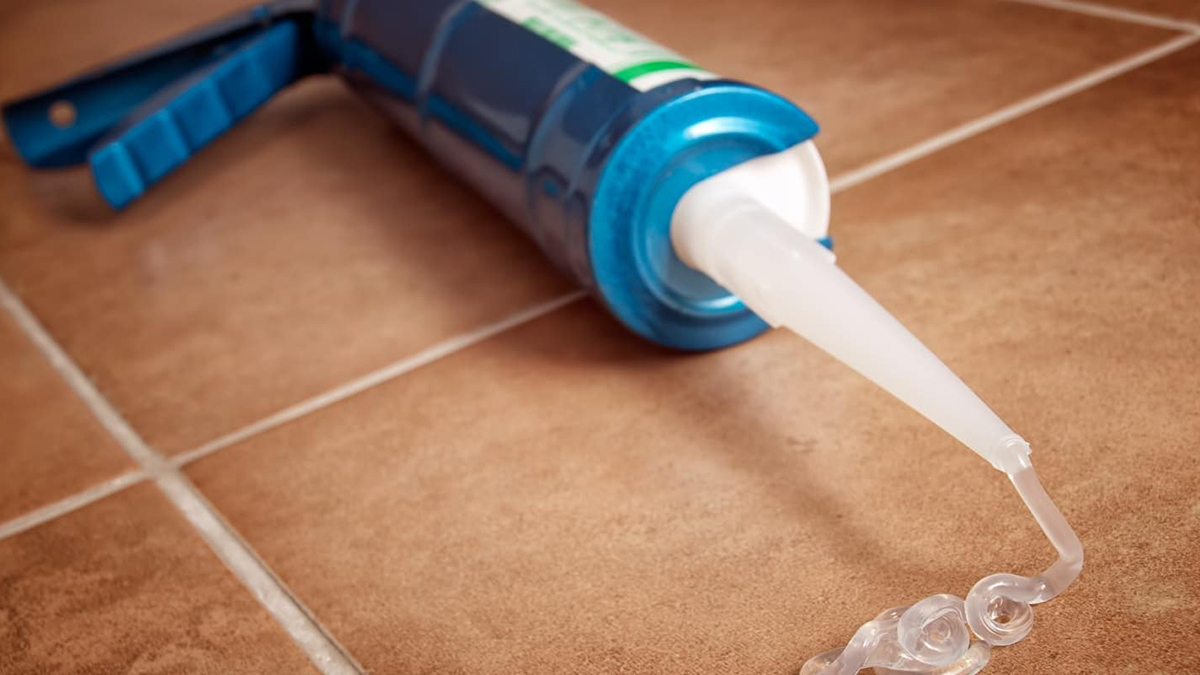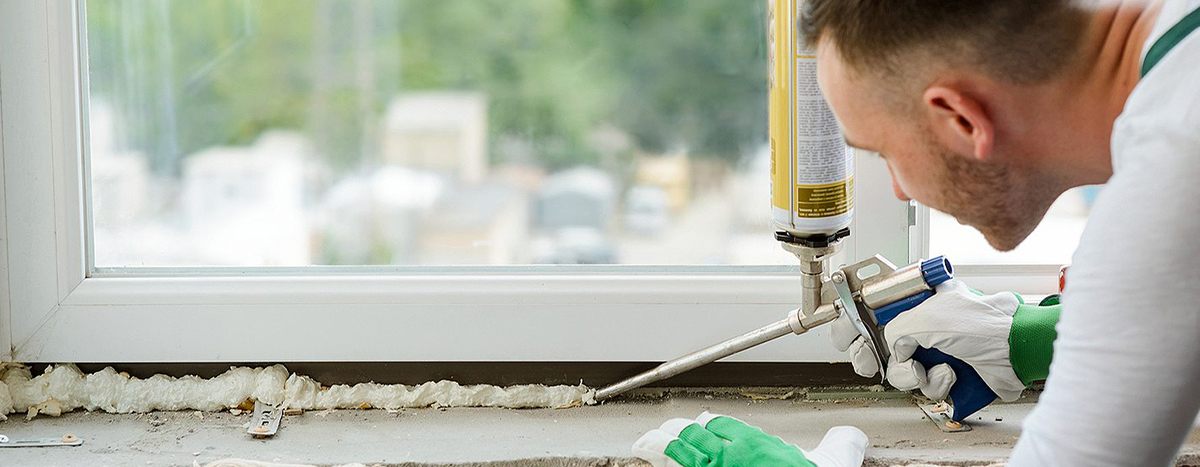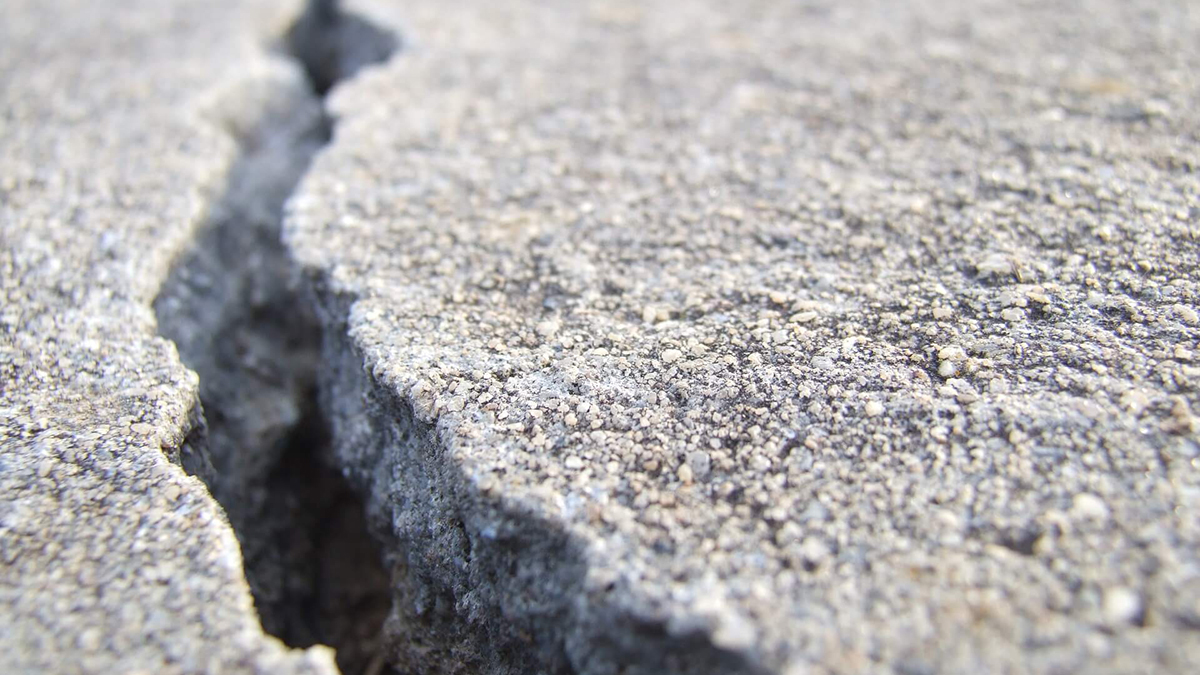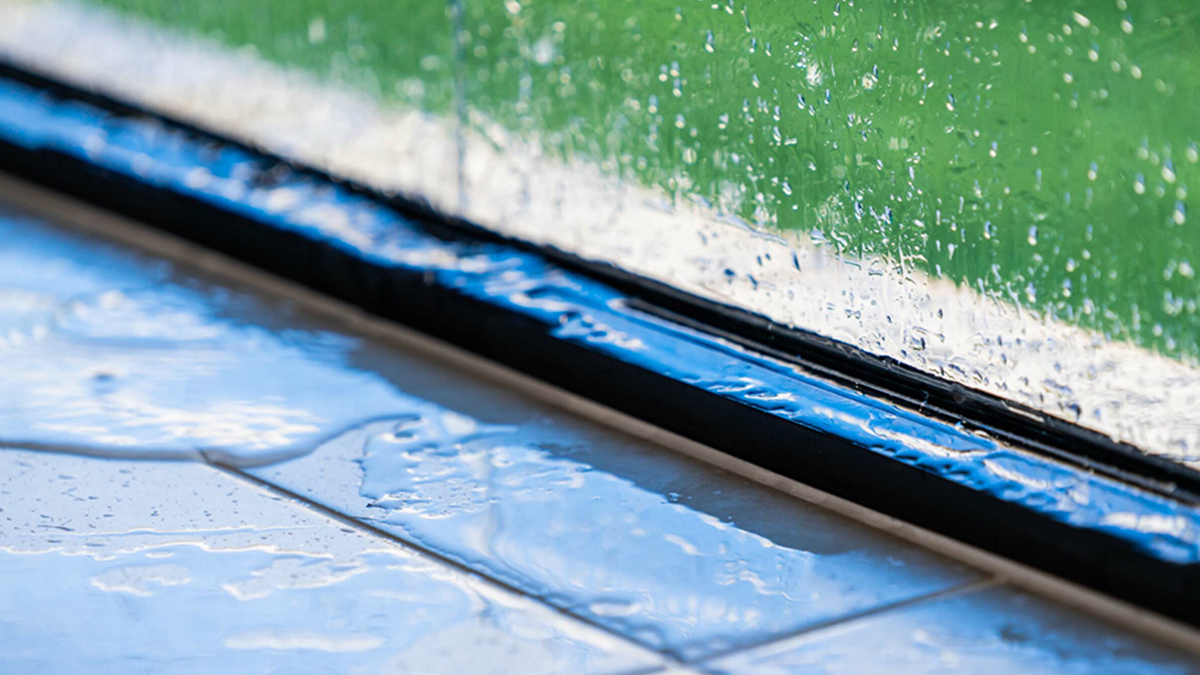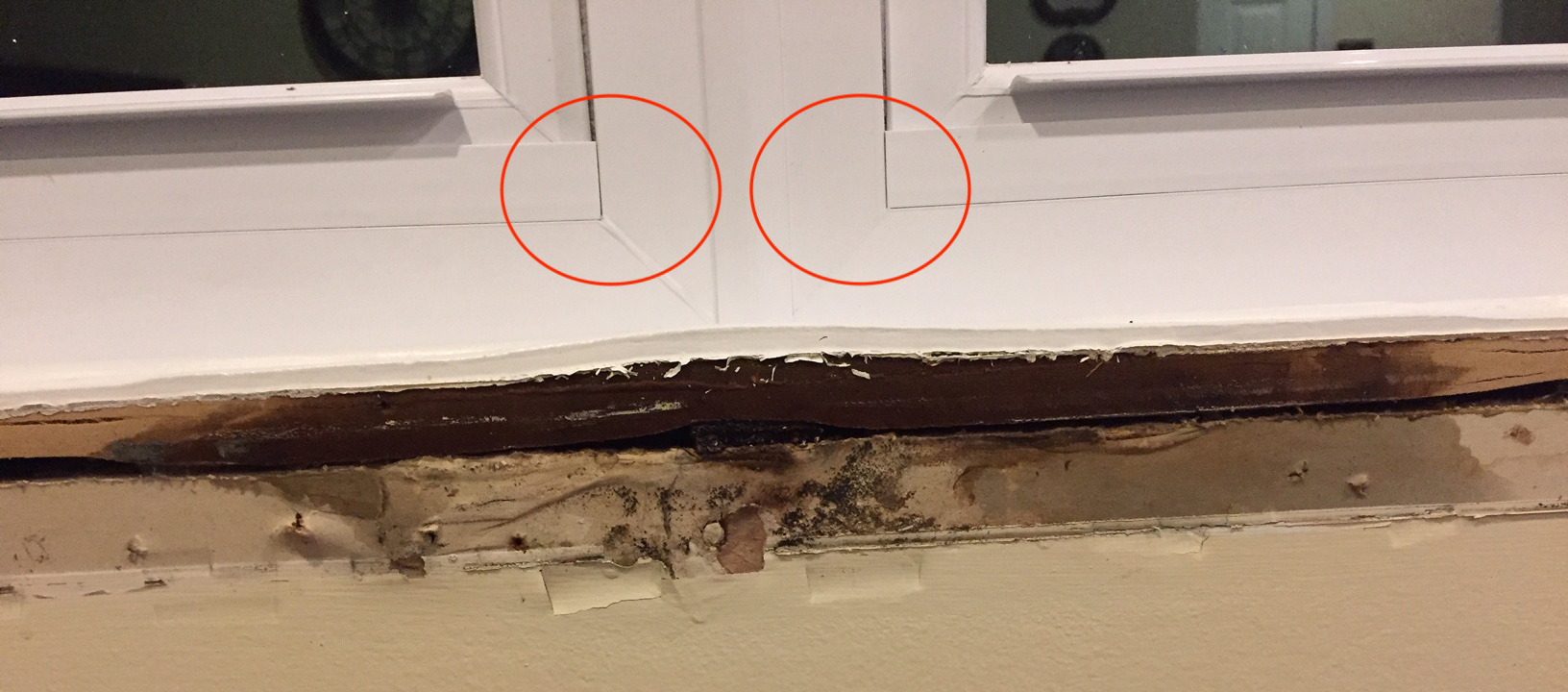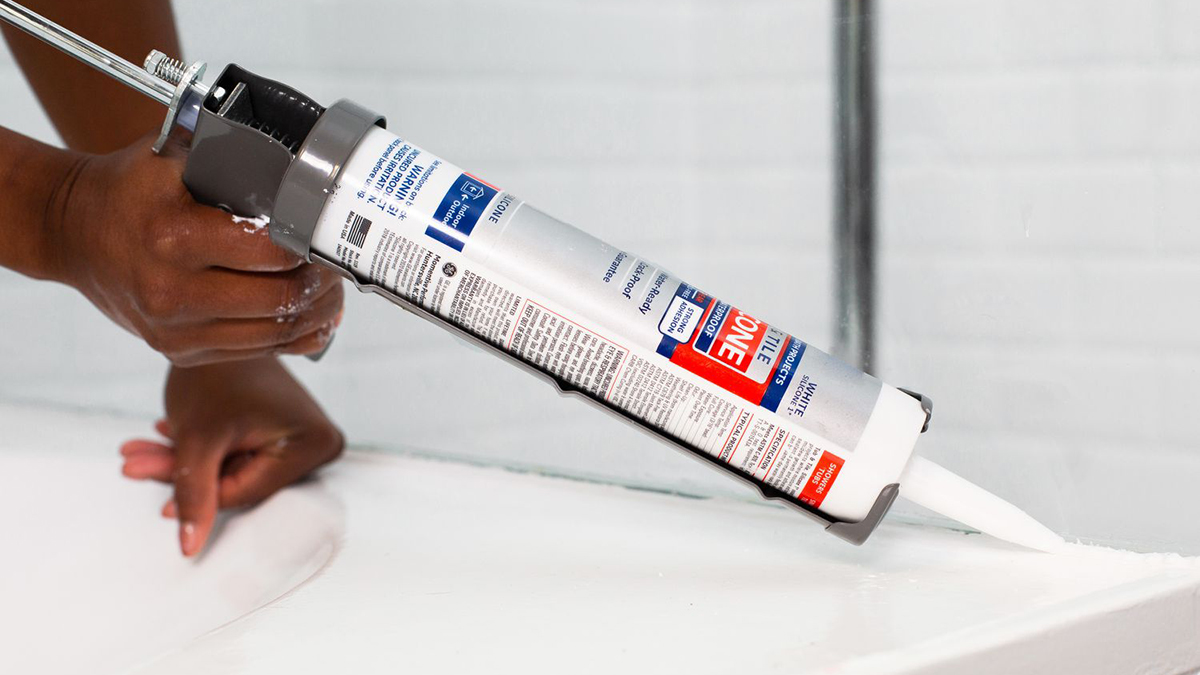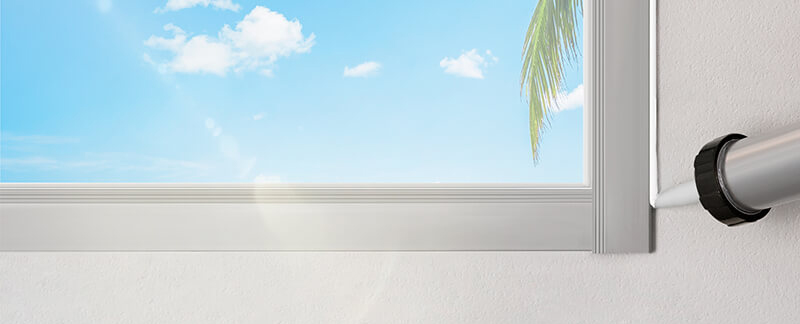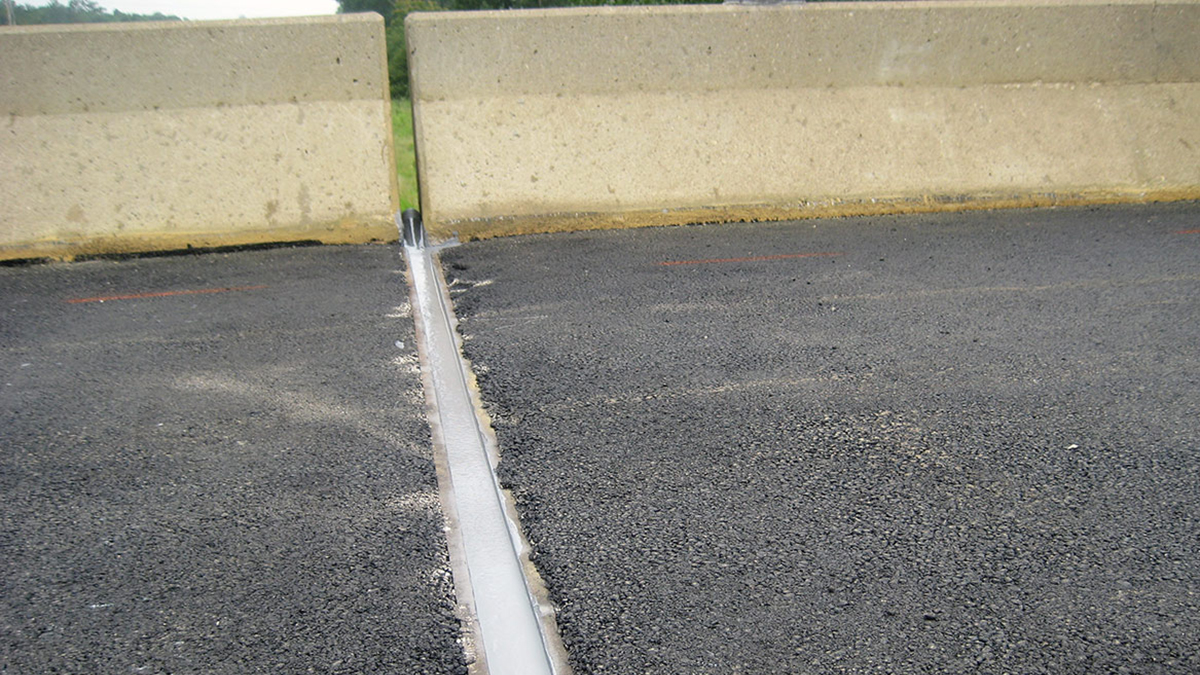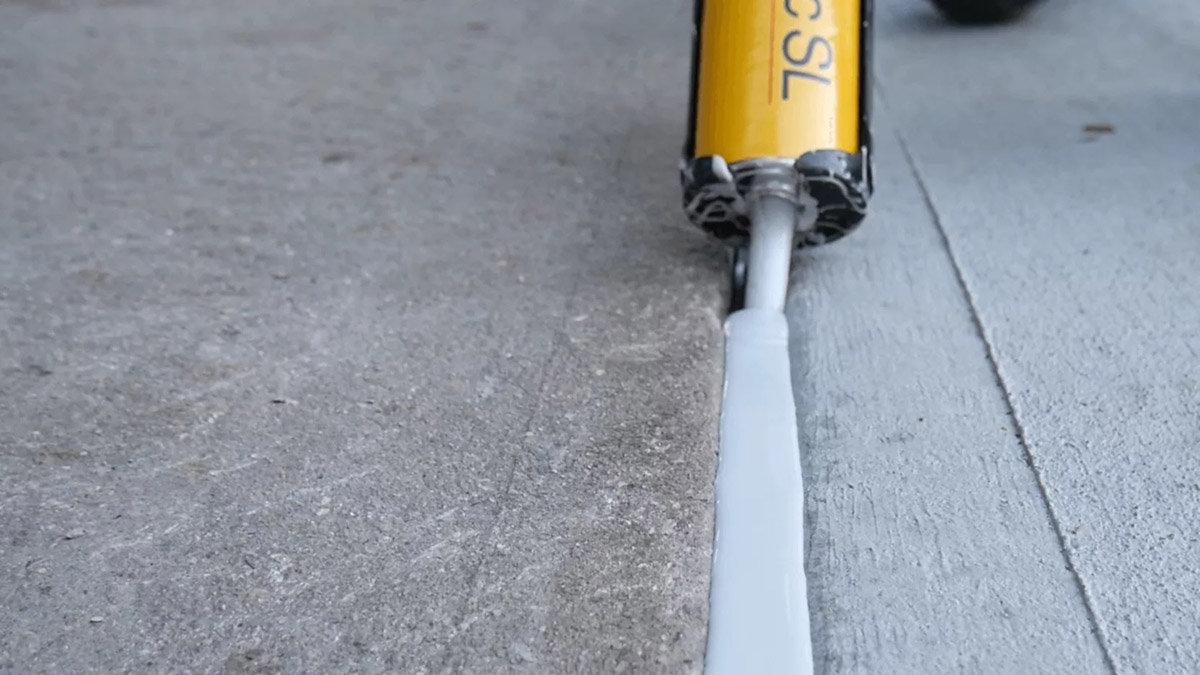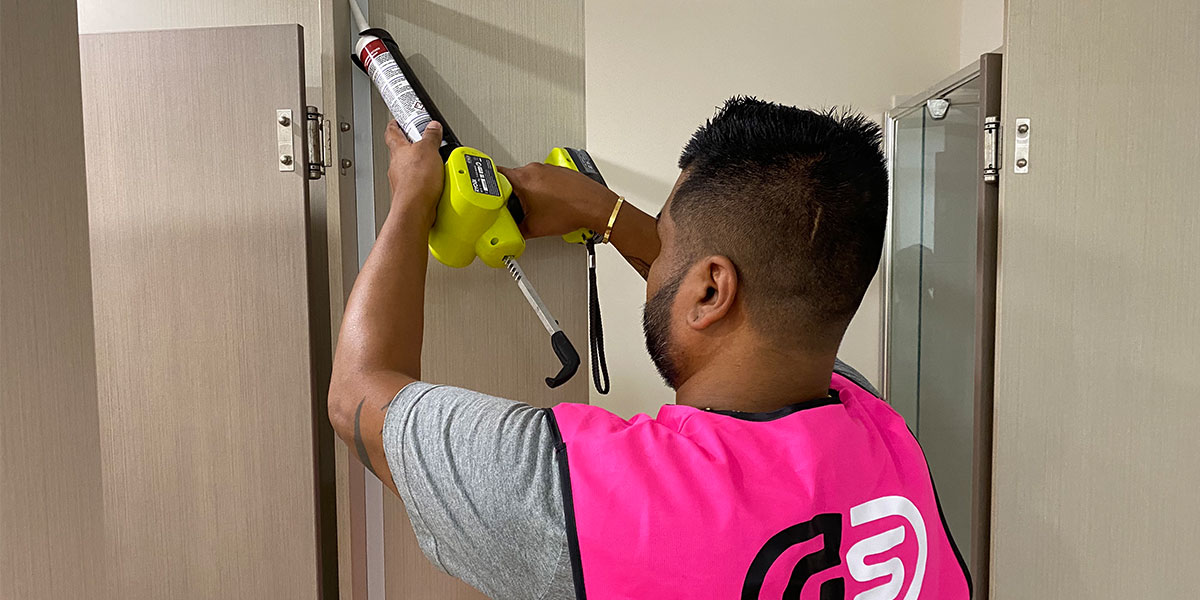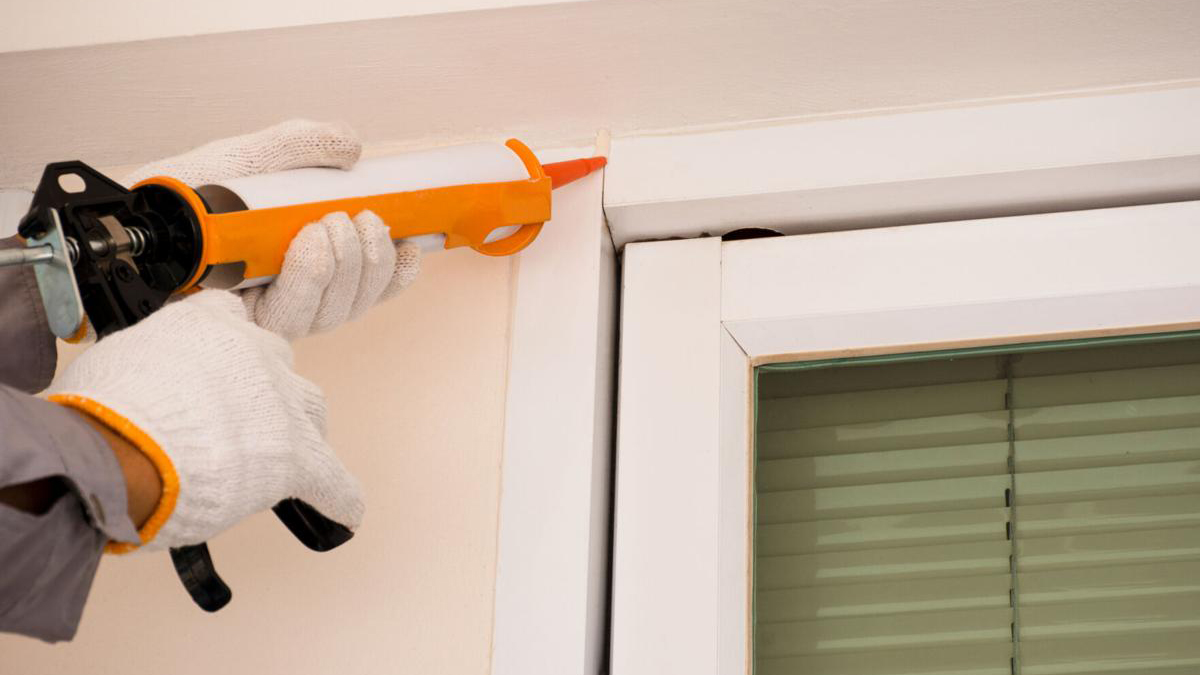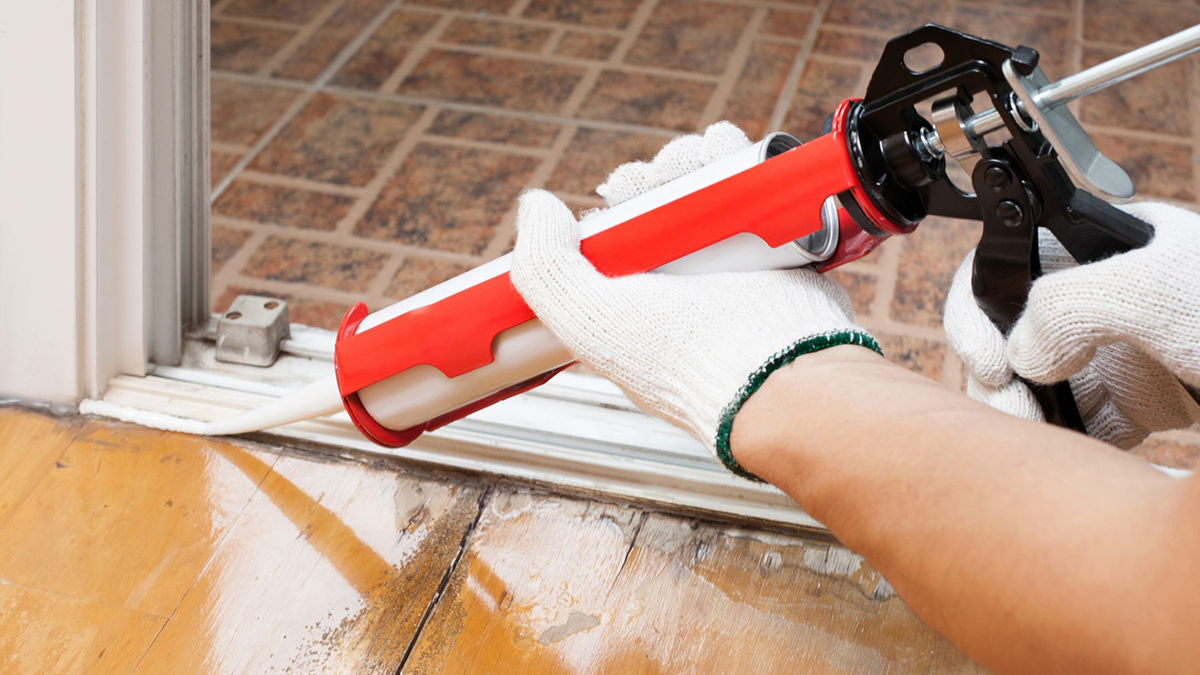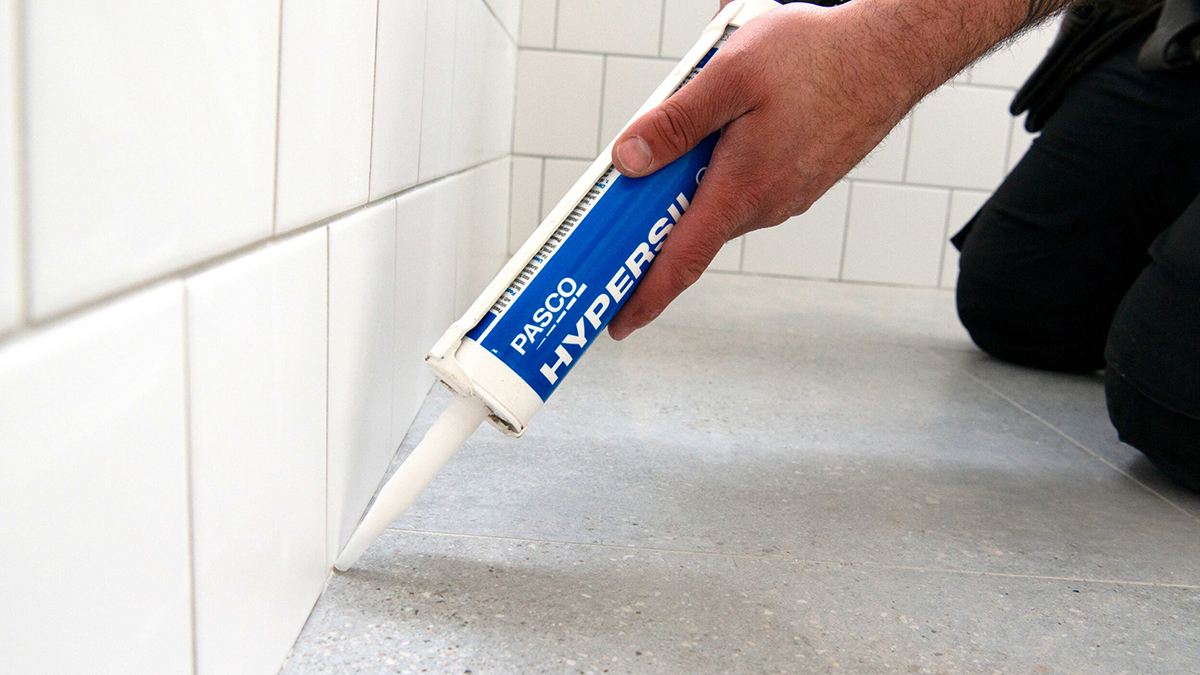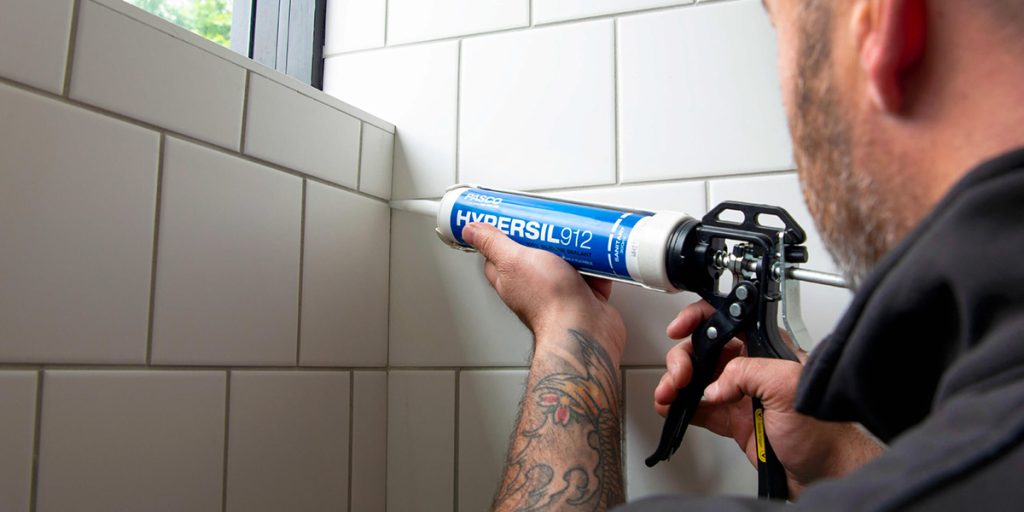Why Professional Caulking and Sealing is Crucial for Large Commercial Projects
For large commercial Professional Caulking projects, ensuring the integrity and longevity of the building is paramount. Caulking and sealing, especially waterproofing caulking in caulking construction, are critical processes that provide a sturdy barrier against water leaks and environmental damage by filling gaps around doors, windows, and other materials. Adequately applied caulking prevents air and moisture from penetrating the structure, protecting it from the elements. This action is essential not only for the maintenance of the building’s aesthetic and structural integrity but also for improving indoor air quality and making the premises more energy efficient, serving as a key strategy in water damage prevention.
Choosing the right caulk, such as concrete caulking for specific materials and utilizing a caulking gun for precision, plays a crucial role in sealing joints effectively. This introduction to proper caulking and sealing techniques outlines the necessary preparation and application methods to prevent water infiltration through window caulking and other susceptible areas. The following segments will delve into the selection of appropriate materials, tackle common challenges encountered during application, and highlight maintenance practices essential for sustaining the benefits of a well-sealed, energy-efficient commercial structure.
Understanding Caulking and Sealing
Caulking and sealing are essential techniques in construction, used to close off gaps and cracks that could otherwise allow moisture, air, and pests to penetrate a building’s envelope. These practices are not merely modern innovations; they trace back to Medieval Europe, showing a long history of evolution to meet the demands of building integrity and efficiency. Today, caulking specialists continue to refine these methods to ensure quality workmanship.
Key Functions and Benefits
- Protection Against Elements: Properly sealed joints are crucial for defending against water leaks and weather damage, ensuring the building’s durability. This is where professional waterproofing services come into play, offering specialized solutions to keep buildings safe and dry.
- Structural Integrity: Sealing helps prevent the development of cracks and gaps that could lead to more significant structural issues, playing a pivotal role in water damage prevention.
- Energy Efficiency: By preventing air leaks, caulking helps maintain temperature control, reducing heating and cooling costs and contributing to a building’s energy efficiency.
- Pest Prevention: Effective sealing can deter insects and other pests from entering the building, maintaining a clean and up-to-code environment.
- Improved Air Quality: Caulking contributes to better indoor air quality by blocking dust and allergens from entering through gaps.
Types of Caulks and Sealants
- Silicone Joint Sealants: Known for their UV and colour stability, these sealants adhere well to various surfaces and can withstand extreme temperatures, making them a small yet critical component of the construction budget, reflecting quality workmanship.
- Acrylic Latex Caulks: Often used for minor repairs, these are paintable and suitable for indoor use.
- Polyurethane Sealants: Ideal for larger gaps, offering robust protection against air and water infiltration.
- Butyl Rubber: Best for sealing joints that are subject to movement, providing flexibility and strong adhesion, ideal for flexible sealing applications.
Application Insights: Proper application is key to maximizing the benefits of caulking and sealing. This includes surface preparation. Correct application techniques, and allowing adequate curing time are crucial to ensure the sealant adheres well and performs as expected. Professionals in the field, like those from General Seal, a renowned professional caulking group on the Gold Coast, Queensland, Australia, are equipped with the expertise to ensure that caulking is done correctly, using high-quality materials for long-lasting protection.
Choosing the Right Caulk for Your Project
When selecting the appropriate caulk for your large commercial project, it’s essential to consider several factors to ensure durability and effectiveness. Here’s a step-by-step guide to help you make the best choice:
Step 1: Assess the Building’s Needs
- Building Material: Determine the types of surfaces that need caulking. Silicone caulk is ideal for non-porous surfaces like glass and metal, whereas polyurethane is better suited for natural materials like wood or stone.
Step 2: Understand Caulk Longevity
- Durability: Silicone caulks, such as DOWSIL™ 790 Silicone Building Sealant, are known for their long-lasting properties, enduring up to 20 years. Polyurethane options, while cost-effective, typically last between five to ten years.
Step 3: Consider the Application Requirements
- Specific Uses: For facades, silicone caulk is superior due to its resistance to weather and UV light. For joints that may encounter chemical exposure, polyurethane is advisable due to its resistance to chemicals and corrosion.
Step 4: Evaluate Environmental Factors
- Weather Conditions: If the project is in an area with extreme temperature fluctuations, choose a caulk like silicone that can expand and contract without cracking. This is crucial for maintaining a seal in diverse climates.
Step 5: Consult with Professionals
- Expert Advice: Engaging with a professional caulking service, such as General Seal, a leading professional caulking group on the Gold Coast, Queensland, Australia, can provide tailored advice based on your specific project needs and ensure high-quality application.
By following these steps and considering your project’s unique requirements, you can choose the right caulk to provide a lasting seal and protect your commercial building effectively.

Preparation and Application Techniques
Essential Preparation Steps
- Surface Cleaning: Begin by thoroughly cleaning the area with a suitable cleaner or solvent. Remove all traces of dirt, dust, grease, or old caulk residue. Ensure that the surface is completely dry before proceeding.
- Old Caulk Removal: Use a solvent and specialist tools to remove old caulk. For areas with persistent sealant, consider using impregnated tape or slab joints.
- Crack and Gap Measurement: Ensure the joint size and depth are appropriate for the caulking material. Use backing material, such as foam rope, for cracks wider than one-quarter inch or deeper than one-half inch.
Application Techniques
- Caulking Gun Use: Invest in a high-quality caulking gun for precise application. Cut the nozzle of the caulk tube according to the width of the crack, ideally at a 45-degree angle for a smooth bead.
- Continuous Application: Apply the caulk in a steady, continuous motion along the joint or gap. Avoid starting and stopping as this can create uneven beads.
- Smoothing the Caulk: After application, smooth the bead with light, steady pressure using a caulking tool or your finger. Use a damp cloth or sponge to remove any excess caulk.
Finishing Touches
- Proper Drying: Allow the caulk to dry completely before exposing it to moisture or painting over it. Follow the manufacturer’s instructions for curing times.
- Weather Considerations: Apply caulking during dry weather conditions to ensure the best adhesion and curing.
- Tool Maintenance: Keep a damp rag nearby during the application process for quick clean-up and maintain your tools by following the manufacturer’s storage and cleaning guidelines.
By adhering to these preparation and application techniques, you can ensure a durable and effective seal, safeguarding your commercial project against various environmental factors.
Common Challenges and Solutions
Weathering and DegradationWeathering and environmental exposure can lead to the degradation of sealant surfaces, necessitating regular inspections and maintenance. To combat this, establish a routine schedule to check and maintain the caulking in commercial buildings. Promptly repair or replace any sealant that appears damaged or deteriorated to prevent further issues. Engaging a professional caulking group can ensure thorough and expert maintenance.
Material Compatibility IssuesCertain materials, such as bituminous products and butylene sealant, may not be compatible with other types of sealants, leading to performance issues. It’s crucial to select the correct type of sealant for specific materials used in your project to ensure optimal performance and longevity.
Challenges in Wet AreasIn moisture-prone areas like bathrooms and kitchens, paying special attention to sanitary joints is crucial. Opt for sanitary silicone sealants with fungicides to ward off Mould growth and ensure a long-lasting seal. A bathroom caulking service can provide the expertise needed for regular cleaning and the use of mould-removing products to keep these areas in top condition.
Preventing Water Damage and MouldProper sealing is paramount for water damage prevention and to halt mould growth, which can undermine both the structure and air quality of a building. It’s essential to ensure that all gaps and cracks are thoroughly sealed, creating an impervious barrier against moisture and water infiltration.
Signs You Need Professional HelpIf you’re noticing visible cracks, gaps, water damage, a spike in energy bills, or mould growth, it might be time to consider a professional caulking group. Such professionals can offer a detailed assessment and provide high-quality caulking solutions specifically tailored to your building’s requirements.
By tackling these common challenges with the right solutions, you can boost the durability, efficiency, and safety of commercial projects. Regular maintenance and professional assessments are crucial for the long-term success and performance of caulking and sealing applications, a service expertly provided by professional caulking groups.
Maintenance and Inspection Tips for Professional Caulking
Regular Maintenance Practices
- Clean Surfaces Regularly: Regular cleaning helps to gently remove mould, mildew, and dirt, preserving the appearance and integrity of caulking.
- Update Caulking: Periodically updating caulking can prevent accidents and injuries, ensuring a safe environment for all building occupants.
- Preserve Structural Integrity: Maintaining your caulking is essential in preserving the structural integrity of the building, enhancing energy efficiency, and avoiding costly repairs.
Annual Inspection Schedule
- Pre-Winter Checks: Schedule annual inspections before winter to assess the need for re-caulking and to prepare the building for harsh conditions.
- Inspect for Deterioration: Look for signs of caulking deterioration such as chalking, discoloration, cracking, and loss of adhesion.
- Prompt Repairs: Address any detected issues immediately to prevent escalation and further damage.
Factors Influencing Caulking Longevity
- Building Age and Exposure: Older buildings or those in harsh climates may require more frequent inspections and maintenance.
- Regular Inspection Intervals: After the initial year, conduct bi-annual inspections to ensure ongoing protection and integrity.
- Focus Areas: Pay special attention to windows, doors, and junctions of different materials during inspections.
Documentation and Professional Assistance
- Record Keeping: Document the condition of caulking during each inspection to track its lifespan and effectiveness.
- Expert Consultation: Engage professionals like those from General Seal on the Gold Coast, Queensland, Australia, for expert advice and superior caulking solutions. Partnering with a professional caulking group ensures top-notch service and results.
- Address Adjacent Issues: Before applying new sealant, ensure that adjacent parts like paint, concrete, and brickwork are in good condition. This preparation is crucial for the sealant to adhere properly and perform its function.
By adhering to these maintenance and inspection tips, your commercial building will maintain its defence against the elements and uphold its structural integrity for years to come.

Professional Caulking Services vs. DIY
When considering caulking for large commercial projects, the choice between hiring professional services like General Seal Australia, and opting for DIY can significantly impact the project’s outcome. Here are key reasons why professional services, often searchable by ‘caulking contractors near me’, are the preferred choice:
Expertise and PrecisionProfessionals bring a wealth of experience and specialized knowledge to the table. They are adept at identifying potential problem areas and applying the most effective techniques to ensure a durable and long-lasting seal. This expertise is what sets a professional caulking group apart.
Time and Cost EfficiencyChoosing professional caulking services, Hiring professional caulking services can lead to significant savings in both time and money. Professionals complete the job efficiently, reducing the likelihood of costly mistakes and the need for future reapplications.
High-Quality MaterialsProfessional services use superior quality materials that are designed to withstand harsh conditions and the test of time, ensuring long-lasting results. This commitment to quality workmanship is what makes their offerings stand out.
Aesthetic EnhancementA professional application ensures that the finish is seamless and clean, enhancing the overall appearance of the space.
Reliability and WarrantyReputable caulking services offer guarantees and warranties on their work, providing peace of mind about the quality and durability of the caulking.
Additional ServicesCommercial caulking contractors often possess skills in related areas such as waterproofing, fireproofing, and thermal insulation, offering comprehensive solutions beyond just caulking. Their expertise in waterproofing, in particular, ensures buildings are not only sealed but also protected from water damage.
Maintenance SupportProfessional services don’t just stop at application; they also provide ongoing support and maintenance, helping to address any issues swiftly and effectively.
Given these advantages, while DIY may initially seem like a cost-saving option, the benefits of professional caulking services, especially for large-scale commercial projects, typically outweigh the DIY approach in terms of quality, durability, and overall value.
Conclusion
Through this article, we have explored the critical significance of proper caulking and sealing in ensuring the durability, energy efficiency, and overall integrity of commercial projects. The selection and application of the right caulking materials, coupled with meticulous preparation and technique, stand out as pivotal steps in safeguarding buildings against various environmental challenges. The insights offered underscore the necessity of employing high-quality materials and professional expertise, illustrating how these elements collectively contribute to the longevity and sustainability of commercial projects.
Moreover, understanding the complexity and the specificity required in the caulking process emphasizes the value of engaging with seasoned professionals. For projects that demand precision and durability, reaching out to a reputable professional caulking group like General Seal on the Gold Coast, Queensland, Australia, can make all the difference. Contact General Seal for all commercial caulking services, ensuring your project not only meets but exceeds the requisite standards. By prioritizing professional caulking services, stakeholders can ensure that their commercial buildings are not just adequately protected today but are also poised for longevity and performance in the years to come.
FAQs
What is the significance of using sealants in construction projects?
Sealants play a vital role in construction by bonding different parts and materials to the main structure and to each other. They are essential for joint sealing, preventing the passage of fluids and other substances through surfaces and mechanical joints.
How does caulking contribute to the integrity of a building?
Caulking is crucial for maintaining the integrity of a building as it seals air leaks and prevents water damage. When applied around plumbing fixtures such as faucets, ceiling fixtures, water pipes, drains, bathtubs, and more, caulking helps protect both the interior and exterior of the structure from water intrusion, making it essential for both bathroom caulking and kitchen caulking.
What does commercial caulking entail?
Commercial caulking refers to the service of applying waterproof sealant to various parts of a building’s exterior. This includes sealing window frames and sills, expansion joints, masonry, concrete components, door frames, and the internal corners where siding meets. Essentially, it is used wherever two different materials come together on a building, requiring a caulk joint to ensure a watertight seal, making exterior caulking and window caulking services critical for maintaining a building’s integrity.
For what purposes is caulking utilized in the construction industry?
In construction, caulking is used as a waterproof filler and sealant for joints or seams to prevent leakage in piping and other structures. Made from flexible materials like latex, rubber, silicone, or a blend of polymers, caulking is applicable in both new construction projects and repairs to fill and seal gaps and create a moisture-resistant barrier, highlighting its importance in caulking construction.
Contact General Seal Today to find out more on The Role of Caulking in Energy Efficiency






